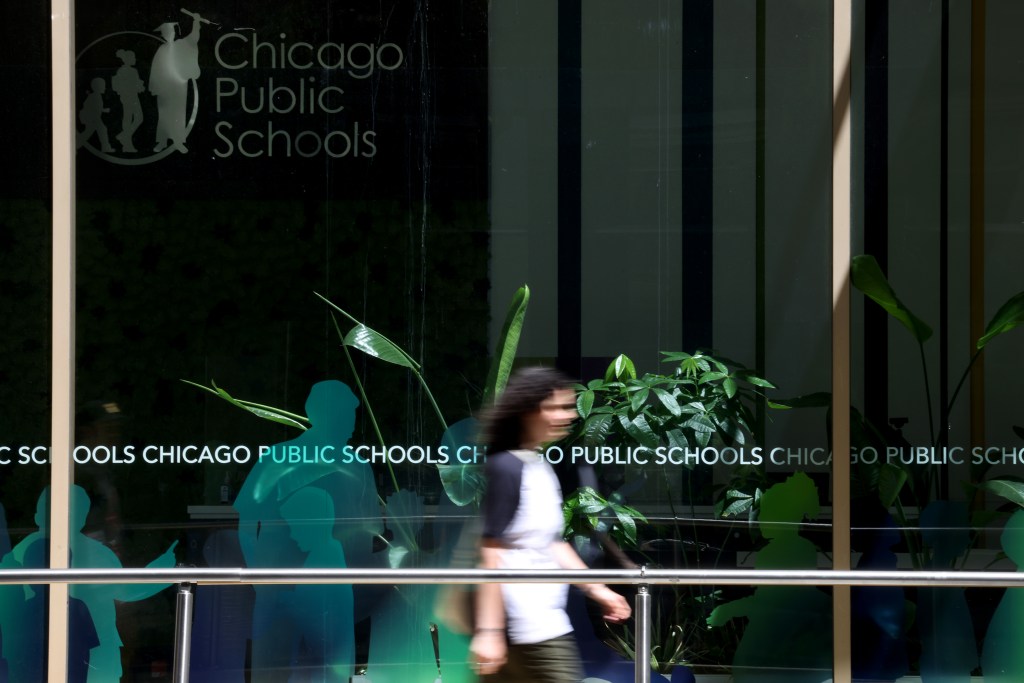Parents, students, teachers and advocates filled dozens of seats in the auditorium at Chicago Public Schools’ downtown offices ahead of the vote to determine the district’s way forward for the next five years.
Shortly after the Board of Education’s unanimous vote to approve its new five-year strategic plan, the room burst into applause, but not everyone was pleased.
After the vote, among the five speakers who signed up to address the board, Angel Alvarez scolded the board for its new plan, saying it “failed to address the institutional problems” the district should focus on.
Although CPS’ plan mentions structural racism being the root cause of opportunity gaps for many students in their plan, Alvarez, a South Chicago native and CPS alumni, said it’s not the cause of CPS’ failure to address ongoing problems such as transporting students with disabilities.
“You need to take more responsibility for the problems in CPS. Because if you do not address them, these systemic problems will persist.” Alvarez said.
The new plan, introduced earlier this week, outlines the district’s priorities and investments through 2029. It emphasizes creating a more equitable school system and aiming to close achievement and opportunity gaps for Black students, Latino students, students with disabilities, students in temporary living situations and English language learners.
While the new roadmap reiterates the district’s promise to focus on shoring up neighborhood schools, the board repeated that selective enrollment, magnet and charter schools are not on the chopping block. Instead, the district now plans to work to reverse the inequity it unintentionally created, recognizing how “current competitive enrollment policies” resulted in “(pitting) schools against each other.”
In December, the board passed a resolution indicating its plans to shift away from school choice, which resulted in waves of uncertainty among parents and students regarding the future of selective enrollment schools. Parents and supporters of school choice pushed for the board to reconsider.
“For this plan to be successful, we will need everyone to stay engaged,” board President Jianan Shi said, inviting community members to view the plan to help them in making it “a reality.”
In previous months, the district has held several community engagement events, including “roundtable” discussions on fostering support and achievement for Black students and forums to gather feedback from district stakeholders.
Most of the public comments at the meeting were supportive of the district’s new plan, with some CPS alumni and parents thanking the board.
“I’m really here on behalf of my nieces and nephews who have been in (Catalyst Schools),” Davis Augustus said. “The school … gives people inspiration so they can move forward. So I just want to say thank you for helping Catalyst out, which is a charter school, and may you continue to help us rise as we struggle in that community to do the things we need to do on behalf of CPS and on behalf of our people in our neighborhood.”
Illinois Network of Charter Schools also publicly applauded CPS’ plan, as CPS Chief Education Officer Bogdana Chkoumbova announced that the board is committed to supporting all school models, including charter schools.
“Charter schools have been a flourishing part of the CPS environment for nearly three decades, and we look forward to working with the board for many more years to support Chicago’s most vulnerable learners.” INCS President Andrew Broy said in a news release.
After the plan’s release this week, Chicago Teachers Union President Stacy Davis Gates said CPS Chief Executive Officer Pedro Martinez is “doubling down on austerity” and is “pushing for school closures, consolidations, furloughs, layoffs and privatization.”
“The best parts of the district’s strategic plan are taken right from our contract proposals, the same proposals the district is actually fighting at the bargaining table,” Davis said. “It’s another case of CEO Martinez telling the people of Chicago one thing and actually doing another. … It’s troubling to see he’s not just out-of-step with Chicago, he’s out of step with the district’s own plan.”


